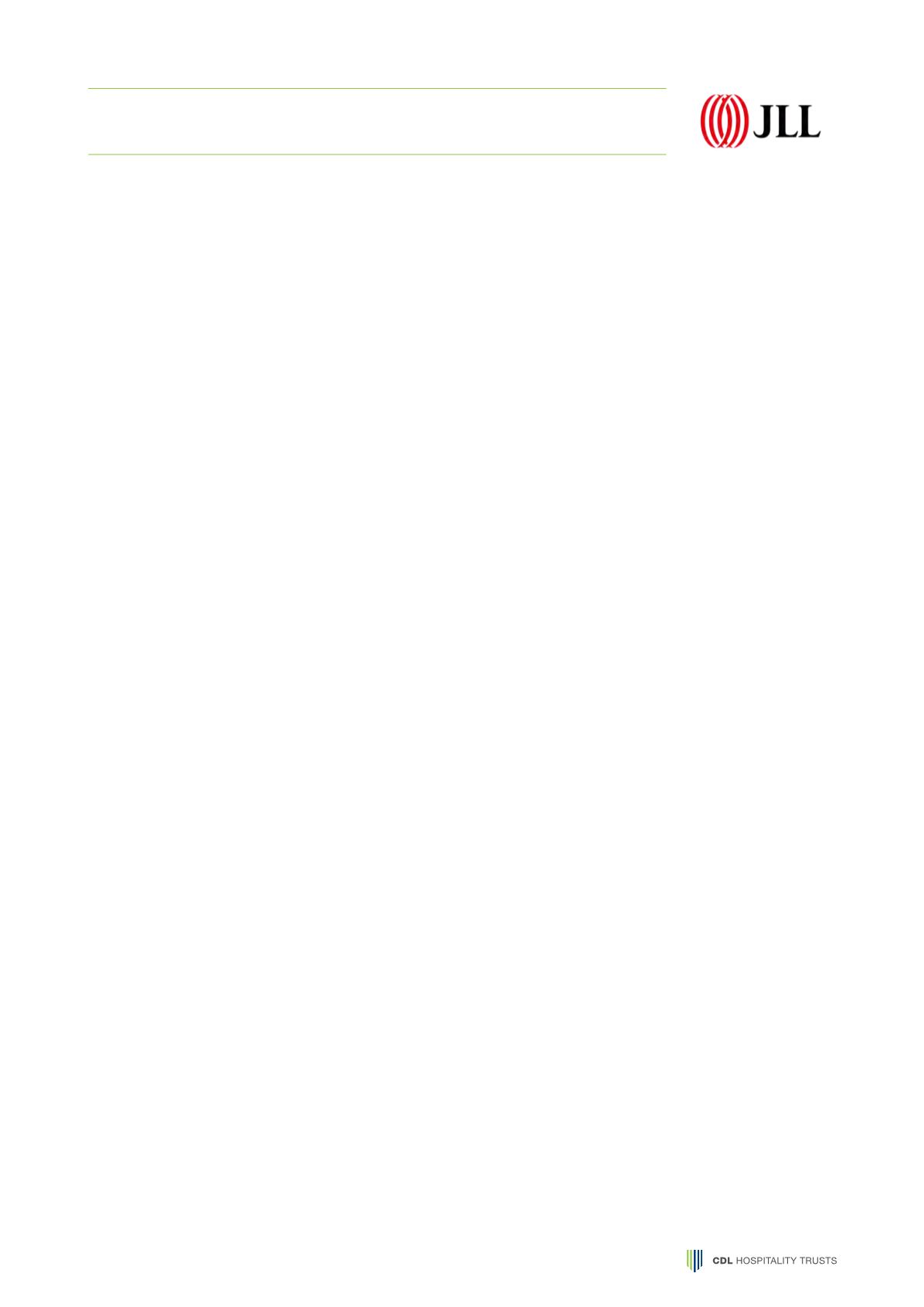

BRISBANE, AUSTRALIA
HOTEL PROPERTY SECTOR
MARKET REVIEW
BRISBANE TOURISM MARKET
Over the 2015/16 financial year, Brisbane reported
1,169,123 international visitors who spent 24,013,202
visitor nights in the region. This represents strong 9.7%
growth in international visitors and 4.1% growth in
international visitor nights compared to the prior year.
When compared to Queensland, Brisbane represented
approximately 47.1% of total international visitors with an
average length of stay in excess of 20 nights. Major source
markets include China, other regions in Asia, Korea, New
Zealand and the United Kingdom. Of these international
visitors approximately 83.4% stayed in a rented house/
apartment/unit/villa or with friends and relatives.
In the same period, Brisbane attracted 5,741,180 domestic
visitors equating to17,477,566 visitor nights. This represents
approximately 28.4% of total visitors to Queensland and an
average length stay of 3 nights. Nearly 50% of all domestic
visitor nights were for the purpose of visiting friends or
relatives and this is supported by approximately 56.9% of
visitors staying with their friends or relatives.
HOTEL MARKET PERFORMANCE
The Brisbane hotel market performed strongly over the
ten years to June 2012 due to minimal new room supply
and strong demand growth underpinned by the buoyant
corporate, government and mining sectors. According to
the Australian Bureau of Statistics (ABS), Brisbane hotel
occupancies peaked in 2011/12 at 81% while market ADR
peaked in 2012/13 at $175. Market Room Yield peaked
at $139 in 2011/12, representing an 18% increase in five
years alone.
According to the latest available ABS data, over the year to
June 2016, Brisbane hotel occupancies declined to 72.4%
which represented the fourth year of a softening occupancy
profile. Market ADR has also declined from the 2012/13
peak to $159 over the year to June 2016, resulting in Room
Yield declining by around 17% from its 2012/13 peak.
This trend reflects modest demand growth not keeping
pace with a 31% increase in room stock over the five years
to June 2016.
EXISTING AND FUTURE SUPPLY
Brisbane is one of Australia’s hotel development focal
points with a strong pipeline of projects. Local and state
Government has provided strong support for hotel
development in recent years. This support has been driven
from strong demand in the corporate and government
sectors between 2009 and 2012 during which time there
was relatively limited hotel development. In addition, the
well-intended motivation to grow and position Brisbane
as a global commercial centre has also motivated interest
in the sector. Significant incentives have included the
Brisbane City Council’s infrastructure charges moratorium
for new hotel development which was in place between
July 2011 and June 2015.
With regards to anticipated future supply, JLL Hotels &
Hospitality Group are aware of eight properties which are
currently under construction in Brisbane City which once
completed will result in a net increase of 1,688 rooms
or 18.6% of the existing stock. We also note that a 374-
room Ibis and Pullman dual branded hotel is currently
under construction at the Brisbane Airport Domestic
Terminal, however this project is located outside the
Brisbane City area.
We are further aware of six likely proposed and
seven mooted accommodation projects comprising
approximately 1,104 and 889 rooms respectively. We note
that mooted projects include those where a Development
Application (DA) for accommodation rooms has been
approved. This differs from likely proposed projects where
a DA has been approved and JLL has determined that
construction is imminent but not certain.
HOTEL MARKET OUTLOOK
Brisbane’s accommodation market has softened since mid-
2012 in line with moderating government, corporate and
convention related demand. Notwithstanding, trading
performance showed some signs of stabilising in 2014,
boosted by the G20 summit in November. However, the
subsequent demand growth evident during 2015 and 2016
was outpaced by a significant increase in hotel room supply
resulting in softer trading conditions overall. We anticipate
this characteristic of the market to continue for the short to
medium term.
Improved performance will be somewhat dependent on
the extent of a recovery in the corporate and conference
segments as well as growth in the leisure segment. Resource
sector related corporate demand may also improve over
the medium term with renewed investment in mining
infrastructure. However a timeframe on these potential
trends remains unclear and at this point is anticipated to
be progressive and over several years rather than being
experienced over the short term. Most challenging for the
Brisbane market will be its ability to absorb the significant
and ongoing increase to supply.
In the medium to long term, recent investments in
convention infrastructure including the expansion of
Brisbane Convention and Exhibition Centre and the
opening of the Royal International Convention Centre
(RICC) are expected to enhance the longer-term outlook in
terms of both corporate and leisure demand. Other projects
aimed at revitalising Brisbane’s central business district and
enhancing Brisbane as a leisure destination are also critical
in this regard. Of particular note are major projects such as
the Destination Brisbane Consortium’s Queens Wharf and
the Howard Smith Wharves redevelopment.
As of 1 March 2017
30


















